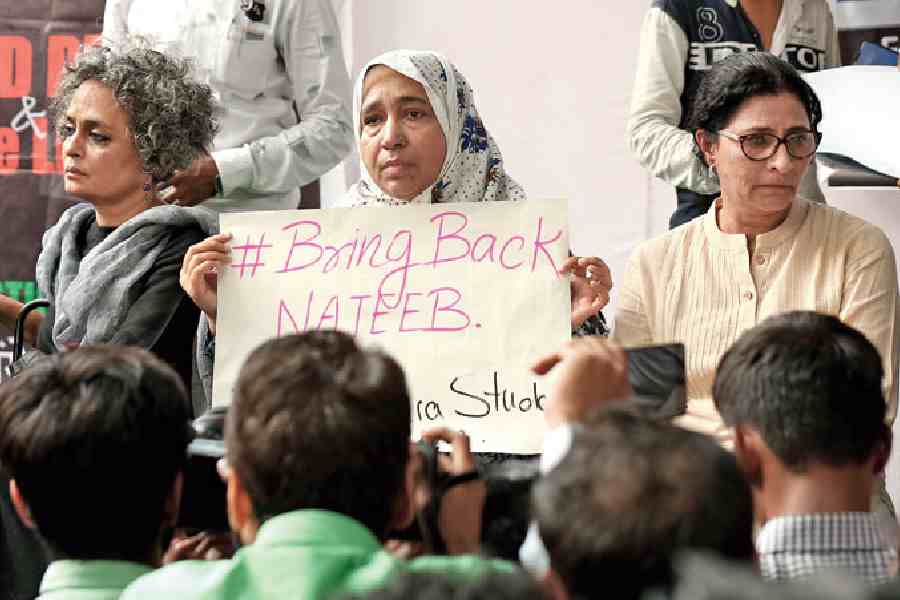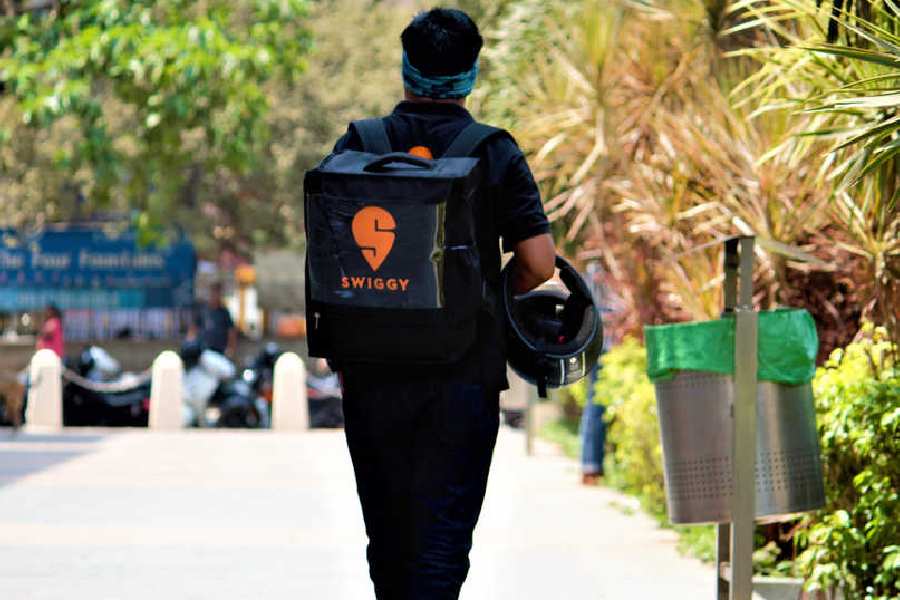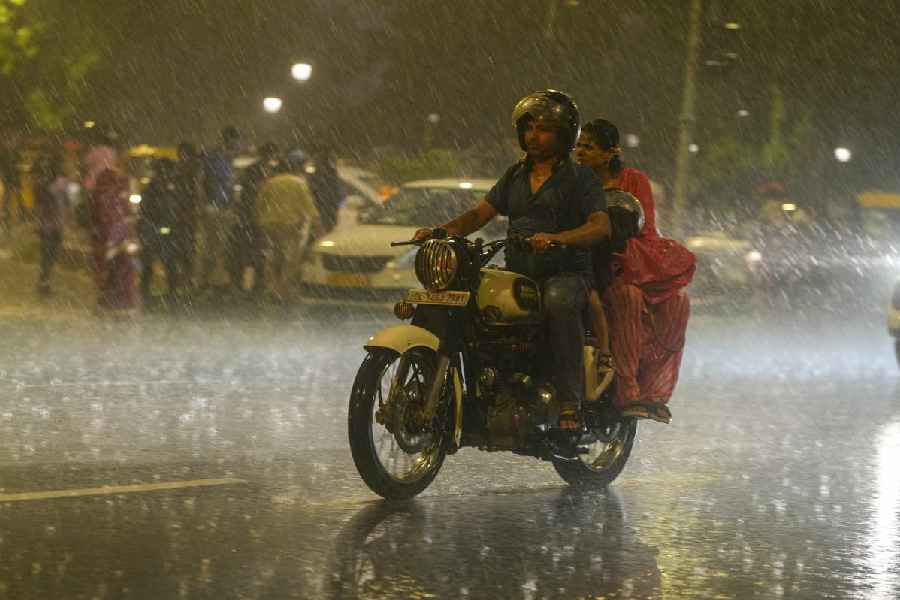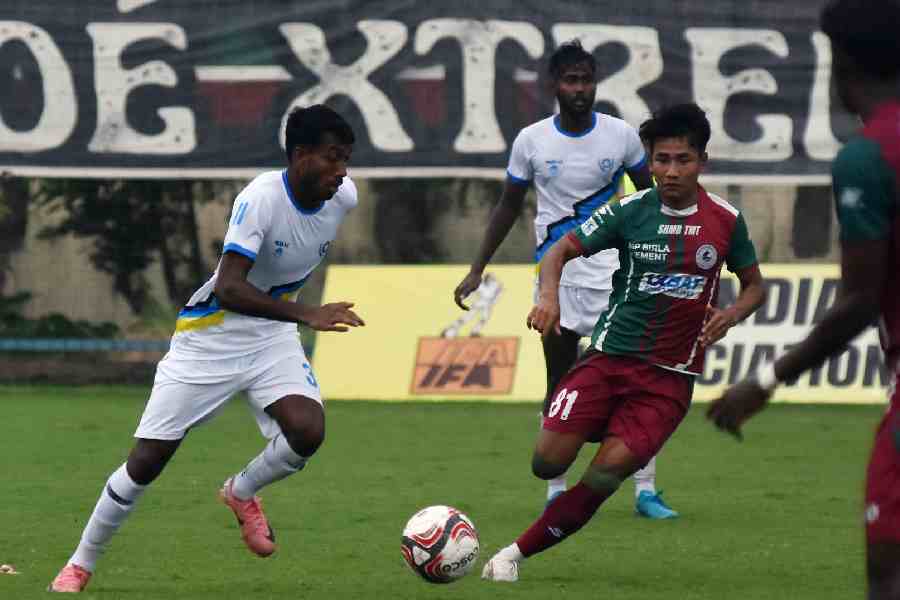 |
Snag-prone Metro Railway sneezed twice on the first workday of the week and traffic on the streets above caught a cold.
Back-to-back glitches in the third rail that powers the Metro rakes not only threw train services off track in two phases between 3.40pm and 6pm but also had a domino effect on road traffic along the route running parallel to the Metro stations.
With commuters spilling out of the stations to the streets and making a dash for anything on wheels, snarls were the order of the afternoon along the length of the northern Metro route till Esplanade and from Tollygunge till Kavi Nazrul (Garia Bazar) in the south.
Citizens stranded on Chittaranjan Avenue, chaotic at the best of times, suffered the most with most buses already packed with passengers and empty taxis hard to come by.
“I am surprised a snag on the Metro tracks can trigger such chaos on the streets. A motorbike almost rammed into me when I tried boarding a crowded bus that had stopped in the middle of the road,” said Prabal Ghosh, who had got off a Howrah-bound Volvo bus on MG Road to take the Metro to Esplanade.
The chaos was compounded by rallies organised by the CPM-affiliated Democratic Youth Federation of India and the Students’ Federation of India on Rani Rashmoni Avenue. Vehicles barely moved along the Esplanade-bound flank of Chittaranjan Avenue from 4 to 5.15pm, coinciding with Metro services being stalled.
“We were forced to divert traffic towards Dalhousie from the BB Ganguly Road crossing for a while to ease the snarls caused by the processions down SN Banerjee Road and JL Nehru Road from 3.30pm,” said a traffic sergeant.
At the Metro Railway headquarters, officials said “an unexpected shift” in the alignment of the third rail was responsible for both disruptions.
The first sign of the snag at Esplanade came at 3pm, when the motorman of a Dum Dum-bound train noticed sparks caused by friction between the transmission line of the rake and the third rail around 250 metres before the station. He immediately reported the incident to the control room.
A motorman of a second train noticed bigger flashes a little later and reported it to the control room. But it wasn’t until 40 minutes later, at 3.40pm, that officials decided to suspend trains between Maidan and Girish Park.
Services continued between Garia Bazar and Maidan, where rakes can change tracks, but trains on the Dum Dum-Girish Park section didn’t run for around half-an-hour.
Barely two minutes after the defective third rail at Esplanade station was repaired and trains resumed plying at 4.36pm, a more serious alignment snag near Tollygunge station struck Metro services.
“It was the same problem of the third rail shifting position, but the misalignment was by a few inches more than at Esplanade station. The traction current collector of a Dum Dum-bound train got entangled with the rail and broke around 300 metres from Tollygunge station,” an official said.
Luckily for the passengers, the momentum of the train took it inside the station despite the snag snapping power supply to the rake.
“The passengers got off safely but we had to suspend services between Garia Bazar and Maidan,” an official said.
At 6pm, services resumed between Tollygunge and Dum Dum but trains didn’t run on the extended southern section until 8.02pm.
Metro Railway has started a probe to find out the cause of the shift in the third rail at two places on the same afternoon.
For commuters inconvenienced by the back-to-back breakdowns, any such inquiry means little in the light of Metro Railway’s fast deteriorating track record.
“Such disruptions have become so common. I have been waiting here (Esplanade station) since 3.45pm because I don’t have a choice. If I take a bus, it would take me around two hours to reach Dum Dum,” said Ashis Dutta, a trader who had come to BC Roy Market.
Metro Railway had recently logged an average five-minute delay for every train over a month, its worst performance in 25 years.
Officials blame ageing rakes, red tape slowing down procurement of spares, increased passenger pressure following the southern extension and the delay in rolling out new trains for the transport lifeline losing its edge.
Metro Railway, which started operations in 1984, ferries more than six lakh passengers every day with a fleet of 18 rakes, two of these on stand-by. Most of these rakes are over two decades old. The diminishing brake power of some of these old rakes is also cited as one of the reasons for trains running behind schedule. As a whiff of fresh air, two AC rakes are set to be introduced before the pujas.
How did the Metro snags affect you on Monday? Tell ttmetro@abpmail.com










